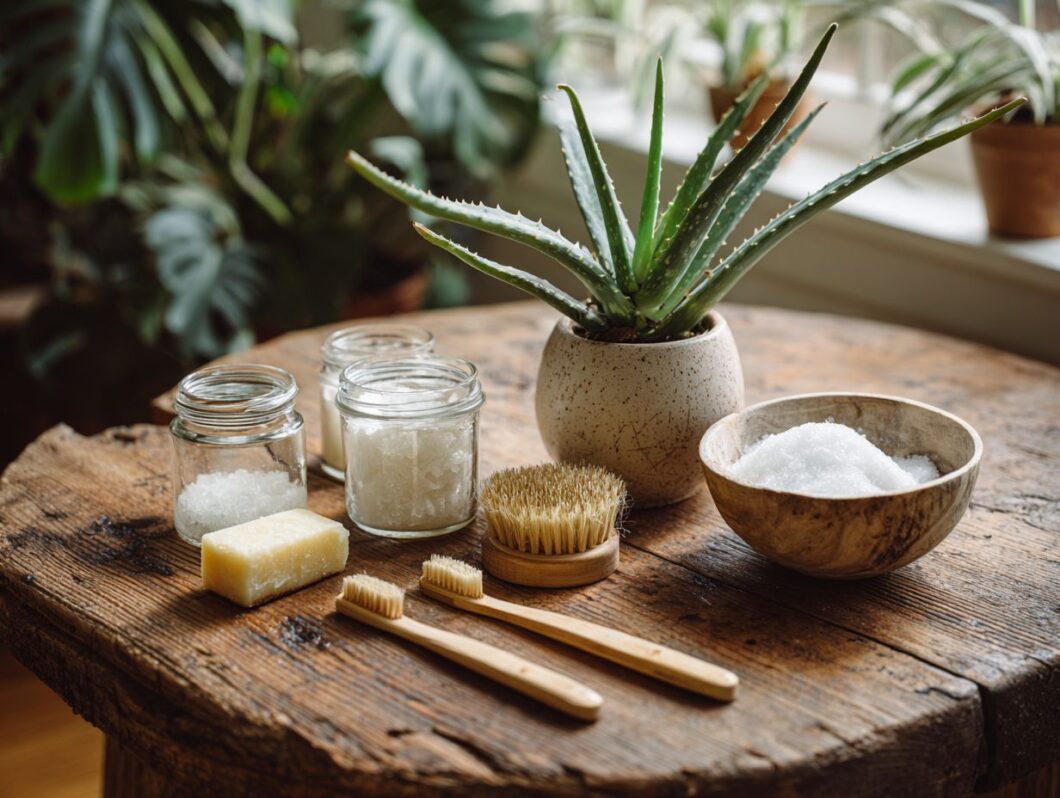In today’s world, building an eco-friendly beauty routine from scratch is more important than ever, particularly during events like Zero Waste Week. With the rise of sustainable beauty trends from countries like the United States and South Korea, it’s easier to find zero-waste skincare brands that align with your values. This guide will walk you through creating a beauty routine that not only embraces eco-friendly principles but also prioritizes your health and the planet.
Key Takeaways:
Understanding Eco-Friendly Principles
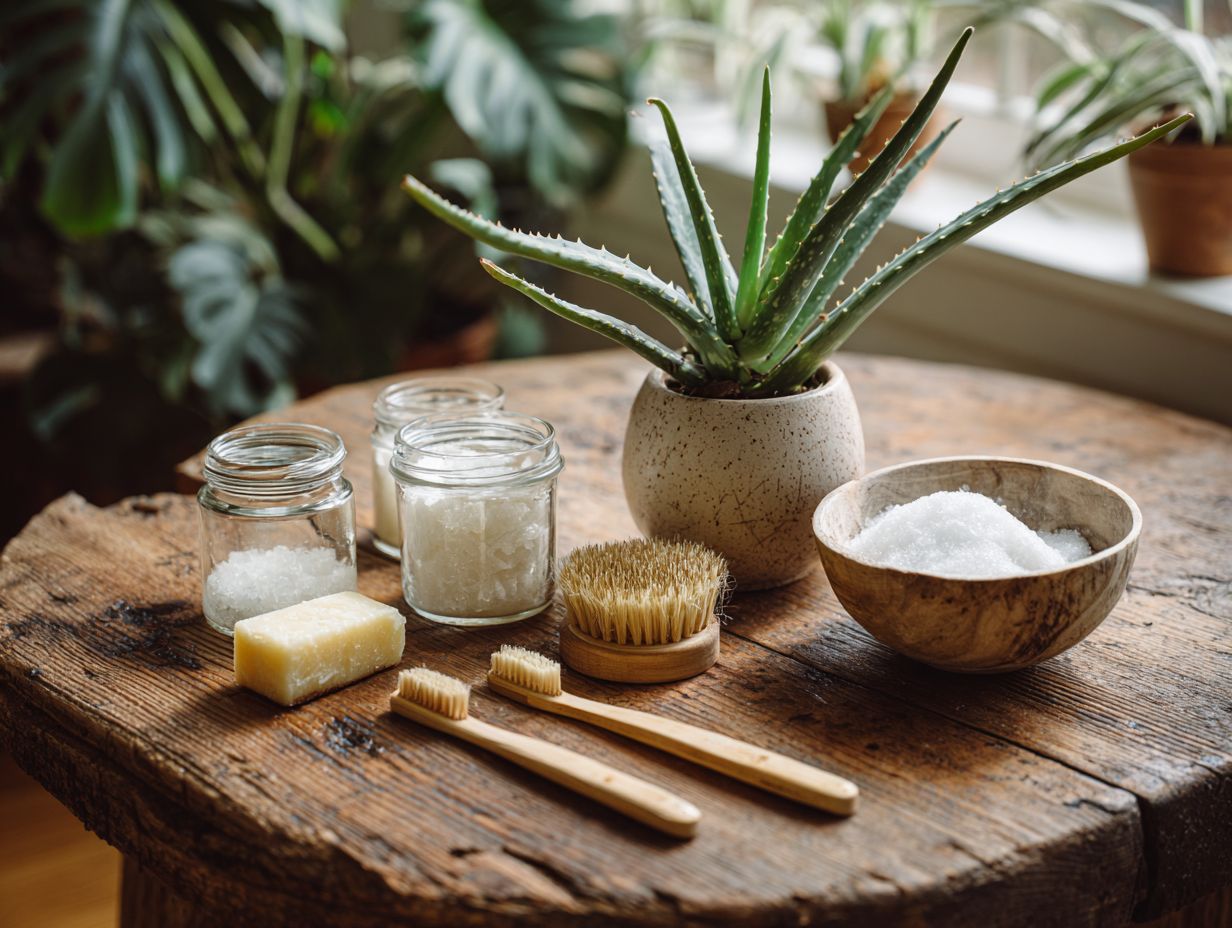
The principles of eco-friendly beauty focus on utilizing natural ingredients, minimizing packaging, and adhering to cruelty-free practices to mitigate harm to both users and the environment.
By incorporating natural ingredients such as raw honey and avocado, I find that skincare brands not only leverage their nourishing properties but also eliminate synthetic chemicals. Sourcing from certified B Corps ensures that the products I choose align with rigorous sustainability standards.
Furthermore, opting for refillable or biodegradable packaging options can significantly reduce packaging waste. For instance, brands like Lush and Ethique actively advocate for eco-conscious practices by employing minimal or compostable packaging, effectively leading the way toward a more ethical cosmetics industry.
This holistic approach benefits consumers while also promoting a healthier planet.
The Importance of Sustainable Choices
Making sustainable beauty choices in your beauty routine is essential, as it not only protects the environment but also promotes a healthier lifestyle for both consumers and future generations.
Incorporating sustainability into my beauty routine involves selecting brands such as L’Oral Paris and RMS, which prioritize eco-friendly practices. I start by reducing the use of single-use items; for example, I opt for refillable containers instead of disposable ones for my skincare and makeup needs.
I also look for opportunities to upcycle beauty products whenever possible, turning old lip balm containers into travel tins or even plant pots.
To further solidify my commitment to sustainability, I familiarize myself with recycling guidelines specific to beauty products, as many containers can be recycled or repurposed. This approach helps minimize waste and promotes a circular economy.
Assessing Your Current Beauty Routine
To transition to an eco-friendly beauty regimen, I find it essential to evaluate my current beauty routine for harmful ingredients, decision fatigue, and excessive packaging waste.
Identifying Harmful Ingredients
Recognizing harmful ingredients, such as parabens and sulfates, can significantly enhance both the safety and effectiveness of my skincare routine.
I begin by familiarizing myself with common harmful ingredients, including phthalates, formaldehyde, and synthetic fragrances. While reading labels, I specifically look for these terms, as they often indicate potential irritants.
I find tools like the Environmental Working Group’s Skin Deep database particularly useful for quickly assessing the safety of ingredients. By simply inputting the product’s name, I can obtain a safety rating along with details about potentially harmful components.
Creating a checklist of safe ingredients and utilizing this database give the power tos me to make informed choices that elevate my skincare routine.
Evaluating Packaging Waste
Evaluating packaging waste requires a thorough assessment of the environmental impact of the containers used for beauty products, with a focus on opting for minimalistic alternatives.
I begin this process by researching brands that prioritize sustainable packaging. For instance, I’ve found that Elate Cosmetics utilizes refillable containers made from recycled materials, which significantly reduces waste.
I carefully examine the ingredients and types of packaging, choosing products in glass or aluminum over plastic whenever possible. Additionally, I consider using reusable containers for my own creations or refills, further minimizing waste.
I also take the initiative to advocate for change by supporting companies that are committed to eco-friendly practices. By sharing my findings on social media, I hope to encourage wider awareness and inspire others. I believe that every small choice contributes to a larger impact.
Choosing Eco-Friendly Products
When selecting eco-friendly beauty products, I engage in comprehensive research on various brands to assess their commitment to sustainability, ethical supply chain, and ethical cosmetics practices.
Researching Brands and Certifications
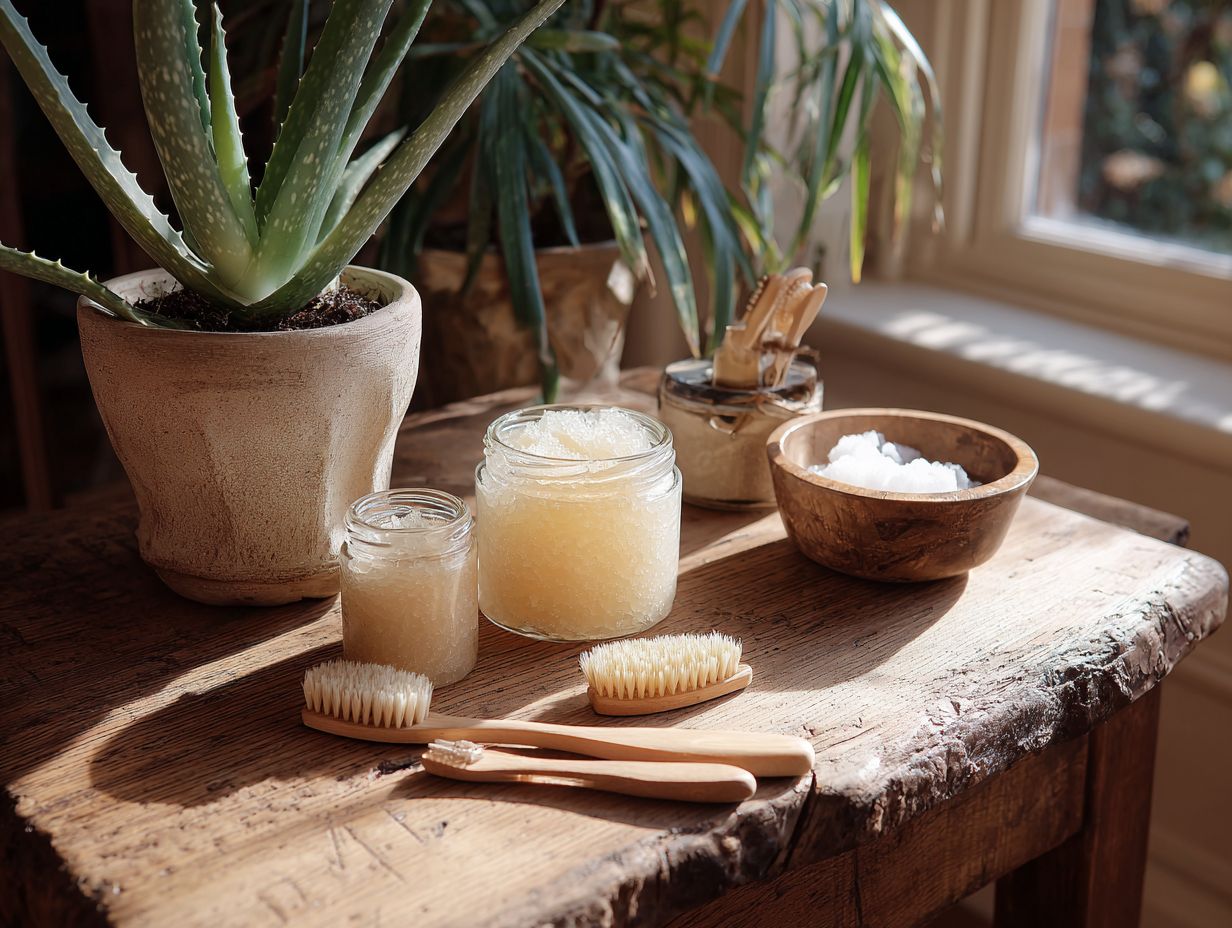
I prioritize researching brand certifications, such as PETA’s cruelty-free label and the Vegan Society logo, to make informed choices about ethical cosmetics.
To gather reliable information about beauty brands and their certifications, I utilize resources like Mother Earth Living, Beauty Counter, and the B Corporations directory.
Mother Earth Living provides insightful articles and guides that delve into various brands’ commitments to cruelty-free practices and sustainability. In addition, the B Corps directory offers a comprehensive list of certified companies that adhere to high social and environmental performance standards.
By consulting these sources, I can ensure that the products I support align with my ethical values, allowing me to make choices that reflect my commitment to responsible consumption.
Opting for Natural Ingredients
I choose organic ingredients, such as organic honey or Greek yogurt, to enhance my skincare routine while supporting eco-conscious choices and practices.
When selecting these natural ingredients, I consider my skin type:
- For dry skin, I find that coconut oil serves as an excellent deep moisturizer.
- For oily skin types, tea tree oil is effective in controlling excess sebum.
- Sensitive skin benefits from aloe vera, which is well-known for its soothing properties.
To identify genuine natural products, I carefully examine the ingredient list. I look for labels that indicate minimal processing and recognizable plant-based components. Additionally, I remain cautious about terms like ‘natural’ and ‘organic’-without proper certification, these terms can often be misleading.
DIY Beauty Recipes
Creating my own DIY beauty products provides me with complete control over the ingredients, allowing me to ensure that they align with my eco-friendly principles and zero waste beauty goals.
Creating Your Own Skincare Products
I find that homemade skincare products can be crafted easily using natural ingredients, which not only reduces reliance on commercial brands but also minimizes packaging waste. Here are three straightforward DIY skincare recipes to help you get started:
- Coconut Sugar Scrub: Combine 1 cup of brown sugar with 1/2 cup of coconut oil and add a few drops of essential oil. This mixture can be used in the shower to exfoliate and moisturize the skin effectively.
- Aloe Vera Face Mask: Blend together 1/2 cup of aloe vera gel, 1 tablespoon of honey, and 1 teaspoon of lemon juice. Applying this mixture for 15 minutes provides a soothing and hydrating treatment.
- Lavender Lip Balm: Mix 2 tablespoons of beeswax, 2 tablespoons of shea butter, and 10 drops of lavender essential oil. Melt these ingredients in a double boiler, pour them into containers, and allow them to cool.
With these recipes, I can easily create effective skincare products at home, promoting both personal care and sustainability.
Homemade Hair Care Solutions
Creating homemade hair care solutions can effectively nourish my hair without the harmful chemicals often found in many commercial products. Here are some effective DIY recipes I like to try:
- Coconut Oil Hair Mask: I mix 2 tablespoons of coconut oil with 1 tablespoon of honey. After applying it to damp hair, I leave it on for 30 minutes before rinsing. The coconut oil provides deep moisture, while the honey acts as a natural humectant, helping to lock in that moisture.
- Avocado Conditioner: I blend 1 ripe avocado with 2 tablespoons of olive oil and leave it on my hair for 20 minutes. The healthy fats in avocado soften my hair, while the olive oil adds a beautiful shine.
- Apple Cider Vinegar Rinse: I dilute 1 part apple cider vinegar with 2 parts water and use it after shampooing. This rinse helps remove buildup and boosts shine.
These simple DIY treatments allow me to embrace natural care for my hair without straining my budget.
Reducing Waste in Your Routine
I can reduce waste in my beauty routine by incorporating refillable and reusable options into my daily practices.
Refillable and Reusable Options
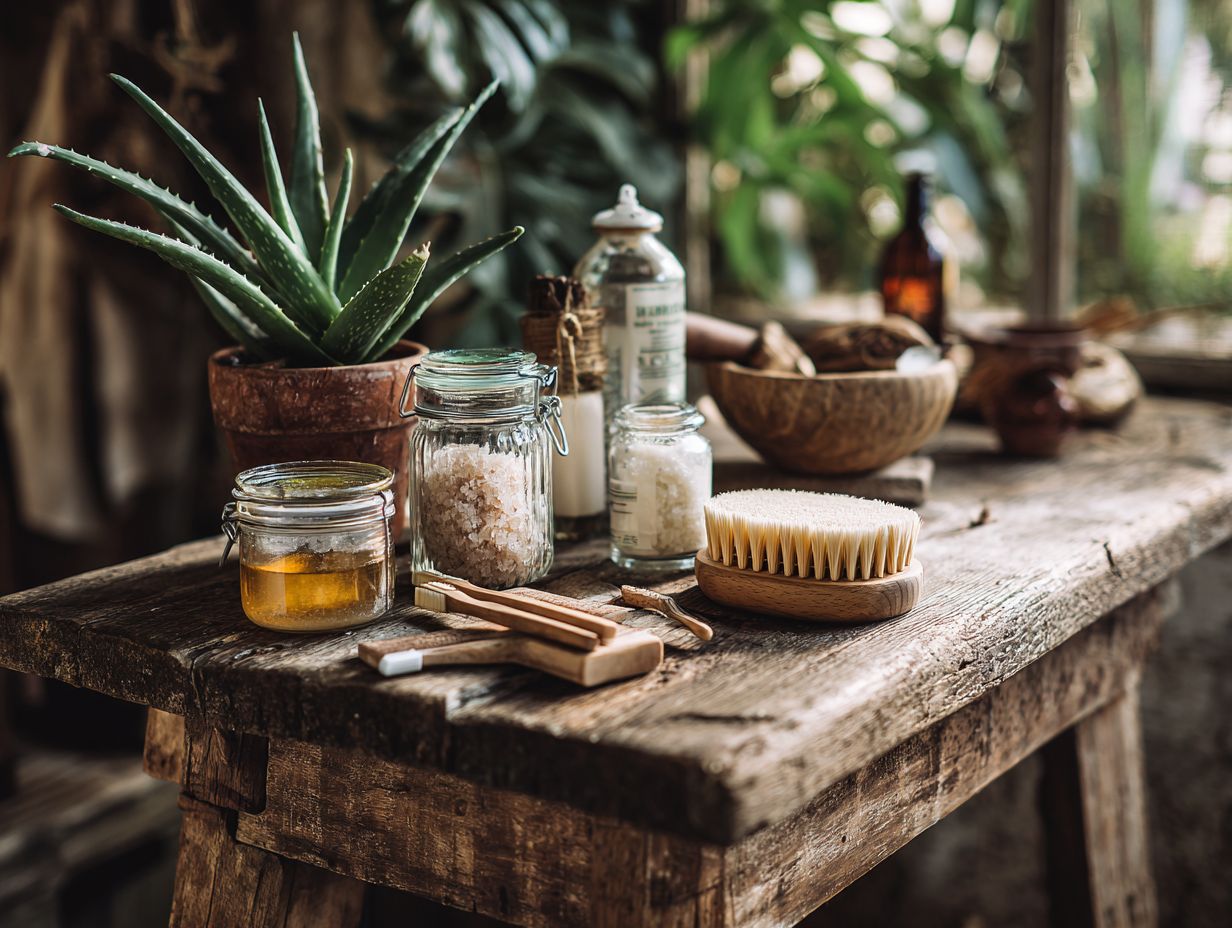
Choosing refillable and reusable beauty products is a practical way to significantly reduce plastic waste and promote a sustainable beauty routine. For instance, I appreciate products like Captain Blankenship’s beauty oils, which are packaged in reusable glass bottles that I can easily refill.
Additionally, brands like Lush offer solid shampoos and conditioners that eliminate plastic packaging entirely.
I also seek out multipurpose items, such as face oils that serve as moisturizers, which allows me to minimize the number of skincare essentials I need.
Furthermore, incorporating refill stations at local shops or subscribing to brands with eco-friendly refill programs can enhance my sustainable beauty journey while simultaneously benefiting the environment by reducing harmful emissions.
Proper Disposal of Beauty Products
Proper disposal of beauty products, including recycling, upcycling, and minimizing waste through reusable cloths, is essential for minimizing environmental impact.
To dispose of beauty products responsibly, I always start by checking whether the packaging is recyclable. Many items, such as shampoo bottles and cardboard boxes, can be placed in my regular recycling bin.
For products that aren’t accepted in curbside recycling, like pumps or aerosol cans, I utilize specialized recycling services such as Terracycle, which efficiently handles hard-to-recycle items, ensuring environmental responsibility.
Additionally, I consider upcycling old containers into organizers or planters and ensure that I empty and clean bottles before recycling. Participating in community events like makeup swaps is another effective way to reduce waste while refreshing my beauty collection.
Building a Sustainable Mindset and Embracing Green Beauty
I believe that building a sustainable mindset requires a commitment to continuous education and a deliberate choice of products that promote both personal health and environmental well-being.
Educating Yourself and Others
Educating myself and others about the significance of eco-friendly practices can lead to a more substantial collective impact on beauty sustainability. I begin by following influential eco-conscious beauty bloggers and social media accounts that consistently share valuable tips on sustainable products and practices.
I also make it a point to attend workshops or webinars hosted by organizations like Zero Waste Week, where I can enhance my understanding of reducing waste in beauty routines through a minimalistic approach.
Additionally, I seek opportunities to collaborate with local groups to organize community events that focus on repurposing items or creating DIY beauty products. This engagement not only fosters a shared commitment to sustainability but also give the power tos my community to adopt and advocate for greener choices.
Supporting Eco-Friendly Initiatives
Supporting eco-friendly initiatives, such as local clean-up events and sustainable beauty fairs, enhances community ties and raises awareness about important environmental issues like Earth Day.
I consider participating in beach clean-ups organized by local nonprofits, which frequently provide necessary supplies and community volunteers.
Additionally, I often attend or volunteer at sustainable beauty fairs, where local vendors display eco-friendly products and practices. Engaging with organizations like the Surfrider Foundation or the Green Spa Network allows me to access educational resources and volunteer opportunities.
By actively involving myself in these initiatives, I not only contribute to environmental conservation but also connect with like-minded individuals who share my passion for sustainability and sustainable sourcing.
Embracing Change for a Greener Future
Embracing change in my beauty routine can lead to significant benefits for the environment, personal health, and overall well-being.
To make eco-conscious choices, I begin by evaluating my current products. I consider switching to brands that uphold sustainable practices, such as Lush or The Body Shop, which prioritize clean ingredients and eco-friendly packaging.
Next, I implement DIY beauty solutions using common kitchen staples, such as:
- Coconut oil for moisturizing
- Sugar for scrubs
- Chamomile tea for soothing skin
I also explore refill stations or packaging-free stores to minimize waste. By gradually replacing conventional products with sustainable alternatives, I not only enhance my well-being but also contribute to a healthier planet. Sharing my journey can inspire others to make similar changes.
Frequently Asked Questions
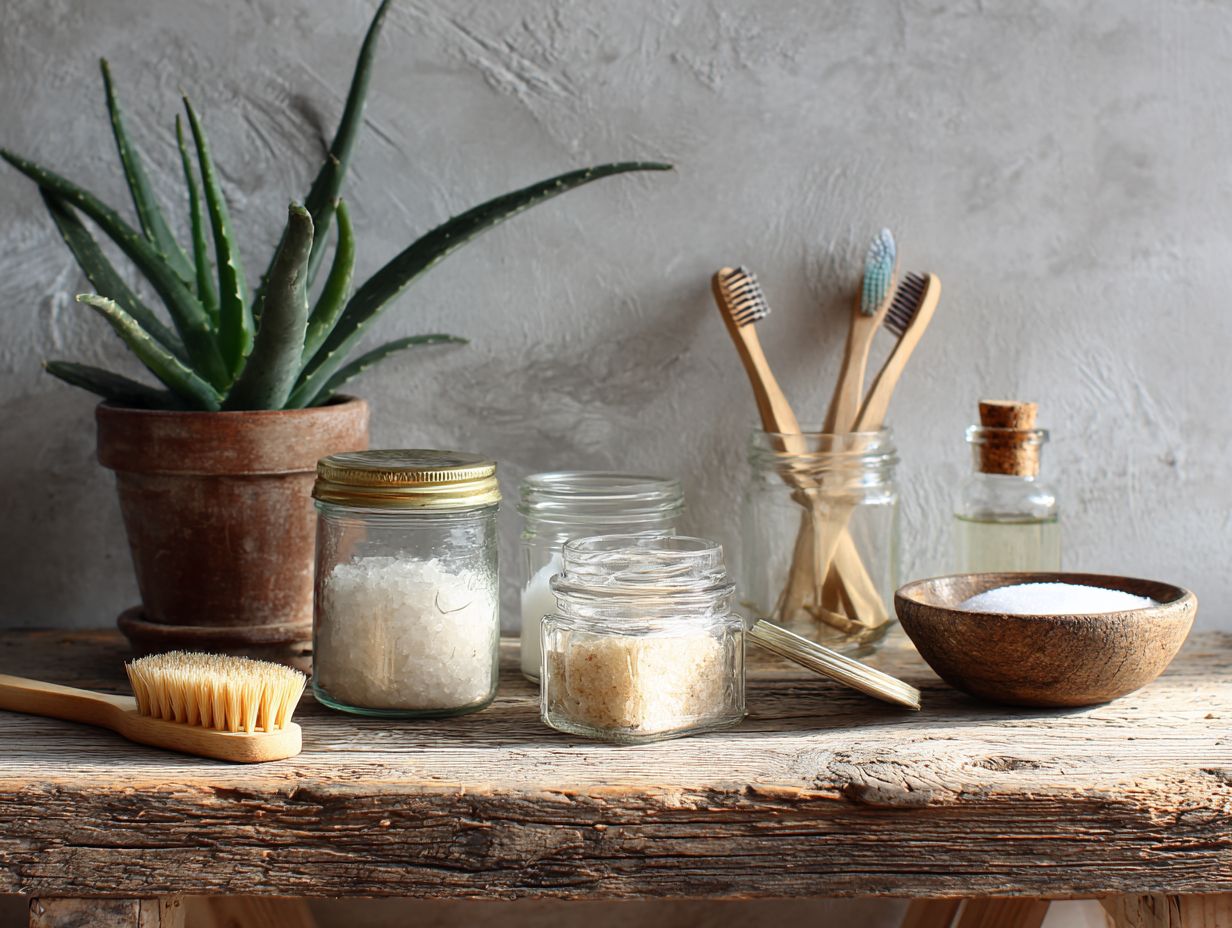
What does it mean to have an eco-friendly beauty routine?
An eco-friendly beauty routine involves using products and practices that are sustainable and environmentally-friendly. This can include using natural and organic products, reducing waste, and supporting companies with ethical and eco-conscious values.
Why is it important to build an eco-friendly beauty routine from scratch and avoid animal testing?
Building an eco-friendly beauty routine from scratch allows you to make intentional and informed decisions about the products you use and the impact they have on the environment. It also helps to reduce your carbon footprint and support sustainable practices.
How can I start building an eco-friendly beauty routine from scratch?
Start by researching and educating yourself about sustainable and ethical beauty practices. Look for products with natural and organic ingredients, recyclable packaging, and eco-friendly certifications. Also, consider making your own DIY beauty products using simple and non-toxic ingredients.
What are some eco-friendly alternatives to traditional beauty products?
There are many eco-friendly alternatives to traditional beauty products, such as using a bamboo toothbrush instead of a plastic one, using shampoo and conditioner bars instead of plastic bottles, and using reusable makeup wipes instead of disposable ones. You can also opt for products with biodegradable or refillable packaging and refillable options.
How can I reduce waste in my beauty routine?
One way to reduce waste in your beauty routine is by being mindful of the products you use and their packaging. Look for products with minimal packaging or packaging made from recycled materials. You can also try making your own products or repurposing containers to reduce waste.
What are some brands that offer eco-friendly beauty products?
There are many brands that offer eco-friendly beauty products, such as Lush, Burt’s Bees, and The Body Shop. Do your research and look for brands that are certified organic, cruelty-free, and use sustainable practices in their production and packaging.


